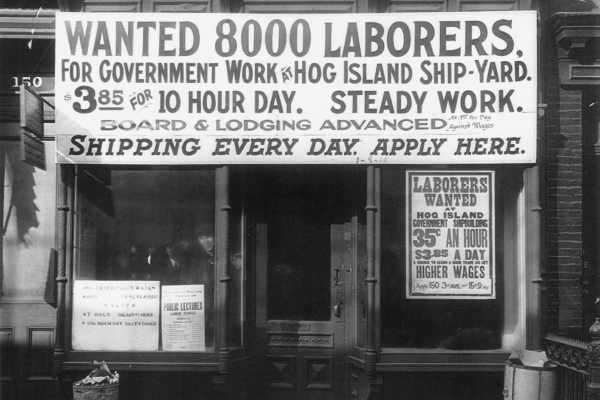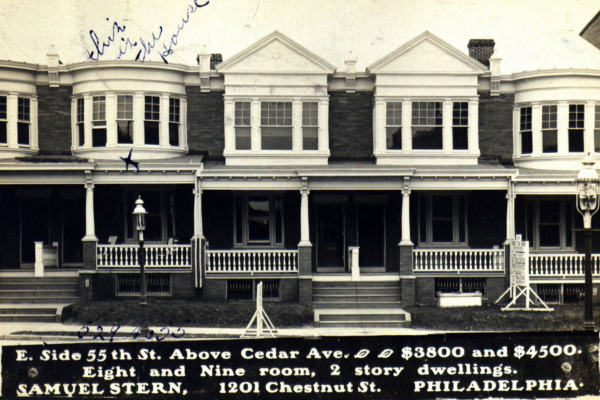The Post-World War I Housing Crisis and Interracial Tensions
Part of
A housing crisis, combined with White resistance to Black settlement, created high rents and overcrowding for migrants in the first wave of the Great Migration.
West Philadelphia experienced a housing crisis during WWI due to the combination of the arrival of vast numbers of African Americans and the slow rate of wartime housing construction. The insufficient supply of available houses meant new residents often had to live in crowded blocks and residences. Racism compounded the problem. Often White residents threatened Black migrants attempting to move into their neighborhood.
The Great Migration created a severe housing crisis in Philadelphia during the first World War as the city struggled to accommodate the huge influx of newcomers. New housing construction slowed dramatically from 1916 to 1918 due to the wartime labor and supply shortages, resulting in little available new housing. Migrants packed into every available space. Sadie Tanner Mossell, in her dissertation study of Black families, observed that housing conditions were deplorable, and the press reported severe congestion and overcrowding.[1] The renewal of Black migration in the early 1920s also saw the emergence of another housing crisis. Most migrants moved to neighborhoods in North, South, and West Philadelphia where Black communities were already established, which led to overcrowding. In West Philadelphia, for example, the press reported the plight of 16 people living in one room over a garage.[2]
The housing crisis was not merely the result of a shortage of houses, but also an effect of White resistance to Black resettlement in neighborhoods. Drawing on press reports, Mossell observed that White Philadelphians were determined to ensure that Black migrants lived only in areas that already had Black communities. Vacant houses in other areas were not for rent or for sale to Black migrants.[3] This discriminatory segregation was also seen in rent increases for Black migrants after 1917. Taking advantage of the influx of southern Blacks, many White realtors wanted to sell properties to Black migrants because they could make a tremendous profit. A White realtor, in an interview with the Philadelphia Tribune, commented that realtors would “charge four or five hundred dollars more because ‘niggers’ ought to be made to pay for the privilege of living in a decent, respectable neighborhood.”[4] The Philadelphia Housing Association (PHA) estimated that sections of West Philadelphia experienced the highest rent increases, with an average of 100 percent from 1914 to the early 1920s.[5]
White discrimination was also seen in the increase in interracial conflicts in several parts of Philadelphia. In West Philadelphia, violence stemmed from White resistance to attempts by Black migrants to move into the area.
- In 1916, a gang of “White thugs” fired gunshots and threw bricks and stones to drive a Black family from their recently purchased house at 4923 Stiles Street. The perpetrators went unpunished.[6] Similar confrontations between Whites and Black migrants continued after the war.
- In September 1918, C. E. Wright, president of the West Philadelphia Business Men’s Association, gave an African American woman 30 days to move from her new house at 5451 Master Street. In this instance, the woman had a more favorable outcome—she explained her case to Police Superintendent Mills, and was given protection.[7]
- In a separate case, a White policeman living at 5906 Haverford Avenue threatened a prospective Black buyer of an adjoining house at 5908 Haverford Avenue. He also issued threats against the African American who eventually purchased the house. In response, Black realtor Andrews F. Stevens, Jr., a former city councilman and partner in the Brown and Stevens Bank, intervened and arranged with Police Superintendent Mills for protection to be provided to the new owner.[8]
Racial tensions continued to flare in the 1920s. In 1928, White mob activity against a Black family at 5547 Media Street was serious enough for the police to form a riot squad to deal with potential disturbances.[9]




